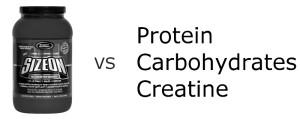 [icon name=”user” class=”” unprefixed_class=””] Suchitra Chari, MS
[icon name=”user” class=”” unprefixed_class=””] Suchitra Chari, MS
Inventions of gadgets have nevertheless made our lifestyles easier but also more sedentary thus causing muscles that were once used in regular household and other work environments under-utilised. In order to keep fit we have since invented other forms of exercise to keep those muscles active, in particular the skeletal muscles that are voluntary. The benefits of exercising help not only the necessary muscles but also their surrounding tissues, bones and the nerves that stimulate them. A form of exercise that is used nowadays is called strength training in which we strengthen our muscles by pushing against a force. This force or ‘resistance’ can take several forms and hence this kind of exercise also goes by the name of ‘resistance training’. The muscles are stretched to a maximum extent and thus can increase in size.
This form of exercise actually causes muscle fibres to break down thus paving the way for new muscles tissues to be formed primarily with help of proteins and other nutrients. It is a natural healing process of the body.
DIFFERENT FORMS OF RESISTANCE TRAINING
The resistance we talked about earlier can come in many forms. Our body’s weight acts as the resistance in exercises like squats, push-ups and crunches. Alternatively, we can use free weights (dumbbells) and weight machines (bench press, leg press and shoulder press) to provide the same kind of resistance. These are all examples of how muscle endurance is determined. Lifting weights of any kind requires very high intensity muscle contractions and uses fast-twitch muscle fibres and consumes little oxygen, protein and fat. Energy for these exercises is the stored energy in muscles.
USE OF SUPPLEMENTS
Creatine is a substance that supplies energy to the skeletal muscle. In fact 95% of all the creatine in the human body is in the skeletal muscles. Athletes and others who would like to build muscle mass consume creatine as a supplement. Also, in general consumption of single (whey protein or carbohydrate or creatine each taken individually) or multi ingredient supplements (ones that combine proteins, carbohydrates and other products) while doing resistance training adds to the benefits of the exercise. The benefit of a particular supplement called SizeOn Maximum Performance (SIZE) was tested to see its advantage over another basic multi ingredient supplement calledProtein/Carbohydrate/Creatine (PCC). Apart from the ingredients that PCC contains, SIZE contains various other vitamins, minerals and amino acids (the building blocks of protein).
HOW THE STUDY WAS PERFORMED
The study was conducted in 24 males aged between 18-35 for a period of 6 weeks or 42 days. All of them underwent resistance training exercises 4 times a week for the entire 6 weeks. The 24 males were split into 2 groups of 12 according to the supplement taken. A 50 mg of either tablet (PCC or SIZE) dissolved in water was given to participants in the respective groups. The supplements were given on the same days of training. The total calories and intake of carbohydrates, protein and fat during the course of the study were almost constant among all patients before and after the treatment.
All samples and readings were made at the start and end of exercise and supplement, that is, at Day 0 and at Day 43. Although the number of participants in the study was less, a powerful analysis tool was used to calculate and interpret the results.
Total body mass, total body water and the fat mass were not very different before and after resistance training or between the 2 supplements. Fat-free mass (indicative of muscle mass) increased to the same extent in both groups after resistance training.
There was no difference in upper body strength and endurance with resistance training and supplementation whereas lower body strength and endurance increased with resistance training but not with supplementation. In an earlier study done with the same 2 supplements for a duration of 9 weeks, muscle strength, endurance and fat-free mass increased but fat mass was decreased.
A hormone that is released in response to stress and low blood glucose is cortisol. Another hormone that we all know in association with diabetes is insulin. This hormone has other important functions too. It helps glucose, amino acids and creatine to pass into the muscle cells and starts the reactions of building the muscle proteins from the amino acids. It also prevents muscle breakdown. All these help build mass and strength of the muscles. Levels of insulin, cortisol and other growth factors that were measured at day 0 and 43 showed no difference with exercise and supplementation.
Both muscle creatine and protein levels were increased in both the groups at the end of the training but there was no difference between the groups. If this study had included a control group (one that did not receive any supplement), then a further conclusion could have been made if the increase in creatine and protein levels was due to the supplement or the training. Markers in the body that are indicative of muscle protein synthesis also increased at day 43 for both the groups but with no difference between them.
All these results help us conclude that both supplements increased muscle mass and strength at the end of 42 days. The benefits of both SIZE and PCC are similar to each other during resistance training.
Summarized from the article:
Mike Spillane, Neil Schwarz and Darryn S. Willoughby
J. Sports Science and Medicine (2014) 13, 894-903
good topic. Thanks for excellent info.